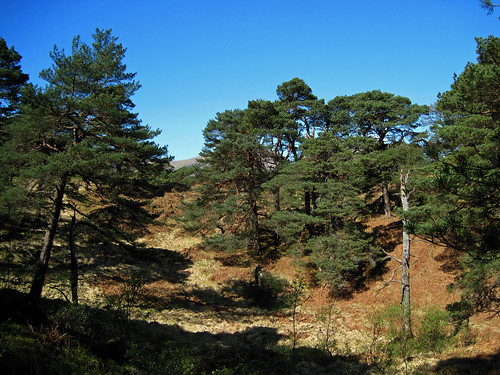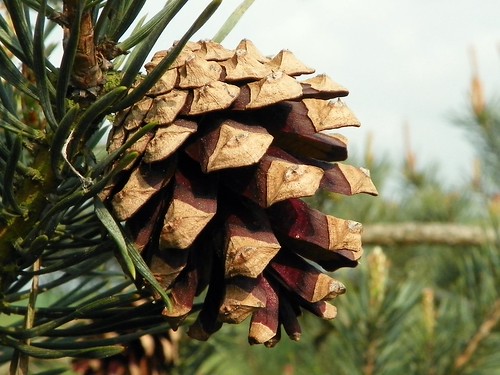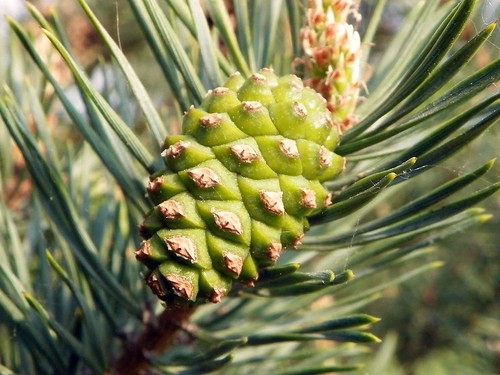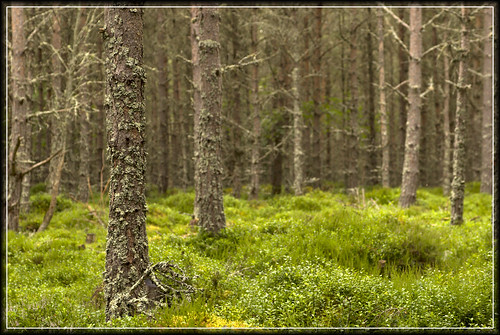Scots Pine – Root and Branch Review
The Scots pine is Britain’s only native pine tree and is one of Europe’s most widely spread conifers growing from Spain to Scandinavia. The branches are horizontal in older trees whilst the roots may be deep or spreading.
Key Features of the Scots Pine
- Latin name – Pinus sylvestris other common names Christmas tree
- Height – up to 150 feet over a long life of 250+ years
- Type of tree – Evergreen Conifer
- Leaves – Long blue-grey needle growing in pairs
- Flowers – male yellow in clusters at the base of shoots, female crimson at the end of shoots
- Fruit – slim egg shaped cones, green ripening to brown
- Bark – A tall tree with narrow trunk covered in orange-red to grey brown plates that are cracked and fissured
- Family – Pinaceae
Origins and Distribution of the Scots Pine
- Native to UK and Europe.
- Grows naturally in Scotland where it is a key species and the national tree of Scotland.
Uses and Attributes of the Scots Pine
- The timber is rich in resin and thus resistant to decay.
- Pine is used in building and the long straight trunks were used for mast and ships spars.
- The plant is rich in vitimin C and the berries and leaves were used to ward off scurvy.
- Scots Pine timber is often called ‘Deal’.
Gardeners Tips for the Scots Pine
- A long lived species that can thrive on poor soil.
- Varieties that are suitable for the garden include ‘Aurea’ a smaller slow grower and ‘Nana’ a dwarf bush Scots Pine.
- Scots pine will not reach their optimum size on shallow dry chalky or damp acid soils.
- For the rock garden try Pinus sylvestris Beuvronensis or ‘Watereri’ which may eventually out grow the allotted space.
Other types of Scots Pine
- There are numerous geographical variants some of which are more bushy than the tall single trunk we are familiar with. There are also several dwarf or pigmy species.
Scots Pine comments from elsewhere
- Traditionally used as a Christmas tree it has been usurped by other trees except in the USA where it is still popular.
- Roots of the Scots Pine can develop as deep taproots or as a shallow root system. This means it is very adaptable and can thrive in poor dry soils and at higher elevations.
- Wildlife Friendly Scots Pine The level branches make good nesting places for birds of prey. The bark fissure host lichen and various wood ants. Birds such as the Siskin, Great Spotted Woodpecker, Great Crested tit and Crossbill can feed well around a Scots Pine. In Scotland Red Squirrels are particularly fond of the cones and seeds of this Pine
Read about our series on British tree reviews with a bakers dozen fact sheets
Credits
Scots Pine Forest by nz_willowherb CC BY-NC 2.0 “National Grid ref NN 328280 “An extensive southerly remnant of the ancient Caledonian Pinewood which once covered much of northern Scotland and is one of only two remaining ancient pinewoods in the Stirling District.”
Scots Pine (Pinus sylvestris) by anemoneprojectors (2) CC BY-SA 2.0
Scots Pines at the Linn of Dee 4 by spodzone CC BY-NC-ND 2.0
Forestry Commission



